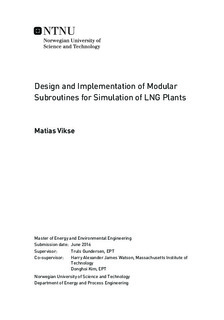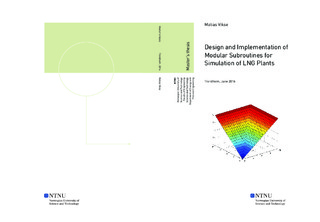| dc.description.abstract | A nonsmooth equation-oriented multistream heat exchanger (MHEX) model has been developed by the Process Systems Engineering Laboratory at Massachusetts Institute of Technology that is intended to be a part of a rigorous optimization and simulation tool for liquefied natural gas (LNG) processes. The model was successfully used to simulate the poly refrigerant integrated cycle operations (PRICO) process for LNG production, though it suffered from convergence difficulties in more complex single mixed refrigerant processes. The primary challenge was flash calculations, which frequently failed to converge with a Newton solver even for initial guesses close to the solution. Equation-oriented simulation models have the advantage of high efficiency, but are generally less robust than the sequential-modular approach, such that improved performance may be achieved by using a different simulation framework.
This master thesis studies two alternative model structures. First, the equation-oriented
framework is replaced with a hybrid solution, in which vapour-liquid equilibrium calculations are included as nested subroutines and solved sequentially. Next, a fully sequential-modular approach is considered. The models are tested for different single mixed refrigerant processes, and are solved with a nonsmooth Newton-type solver using Clarke Jacobian elements as generalized derivatives. The implicit function theorem for lexicographically smooth functions is used for computing analytical derivatives in the subroutines.
Results showed that the hybrid models were considerably more robust than the original equation-oriented models. In addition, they required fewer iterations to converge. However, as expected, they suffered a loss in efficiency. About half the computing time in the hybrid PRICO model was spent on the vapour-liquid equilibrium modules, which was primarily due to derivatives calculations. As a consequence the time per iteration was between 4 and 5 times longer for the processes studied, and even with fewer required iterations, the models were normally 1.5-3 times slower. On the other hand, the sequential-modular framework turned
out to be unsuitable for simulating the LNG models as it was both significantly less
robust and efficient than the other approaches. The observed drop in robustness is against the general theory, however, and it was concluded that the convergence problems were caused by modularizing the MHEX model. | |

